Here are some of our plants that feed bees:
- Spring
- Summer woodies: Trees, vines, and shrubs in summer (this page)
- Summer herbaceous plants
- Fall and goldenrods, too!
Shrubs, trees, and vines
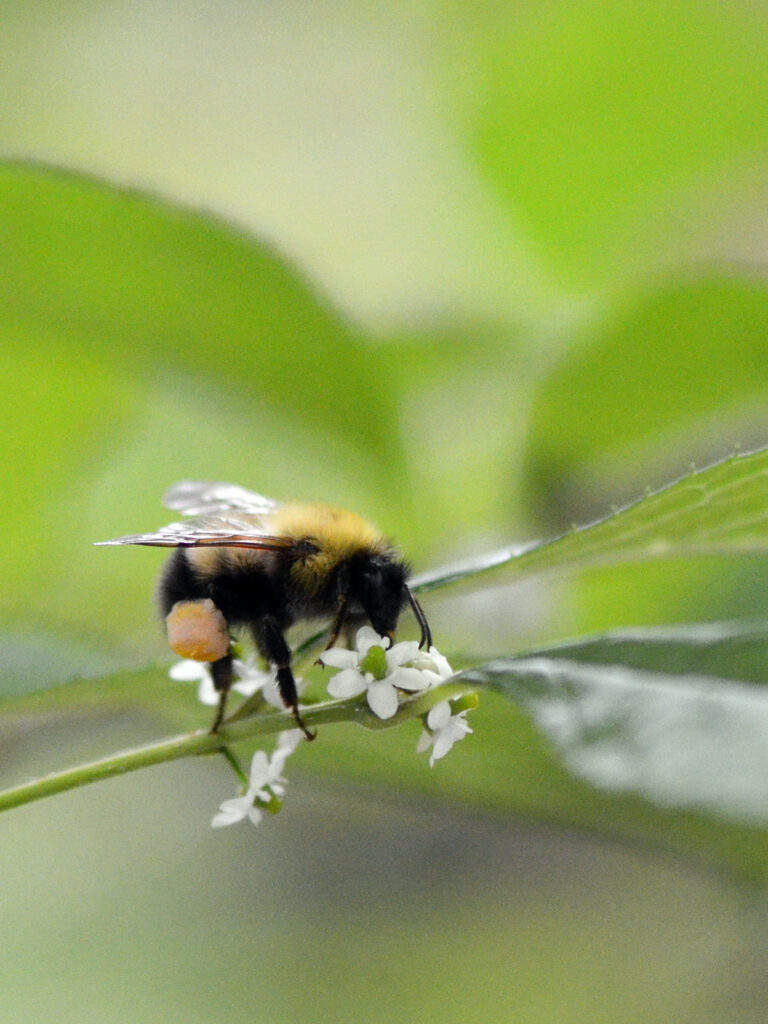
The appeal of winterberries (Ilex verticillata) for people (and birds) is the mass of brilliant red berries in winter, but the bees love the flowers in summer.
This plant showed me that flowers don’t have to be large to be attractive to bees! These tiny flowers must be chock full of nectar since when they bloom it’s a bee hot spot. The bushes were just buzzing with activity.
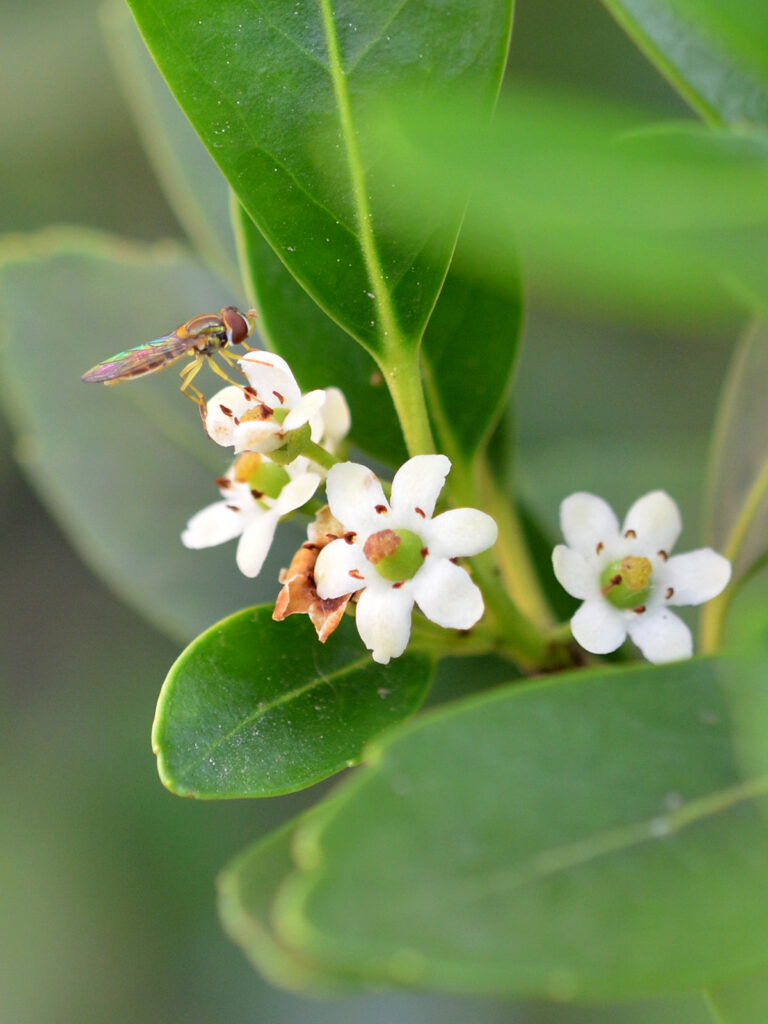
These tiny inkberry (Ilex glabra) flowers are also good nectar sources.
Like winterberries, they’re also a type of holly, so they require male plants to produce berries on the females.
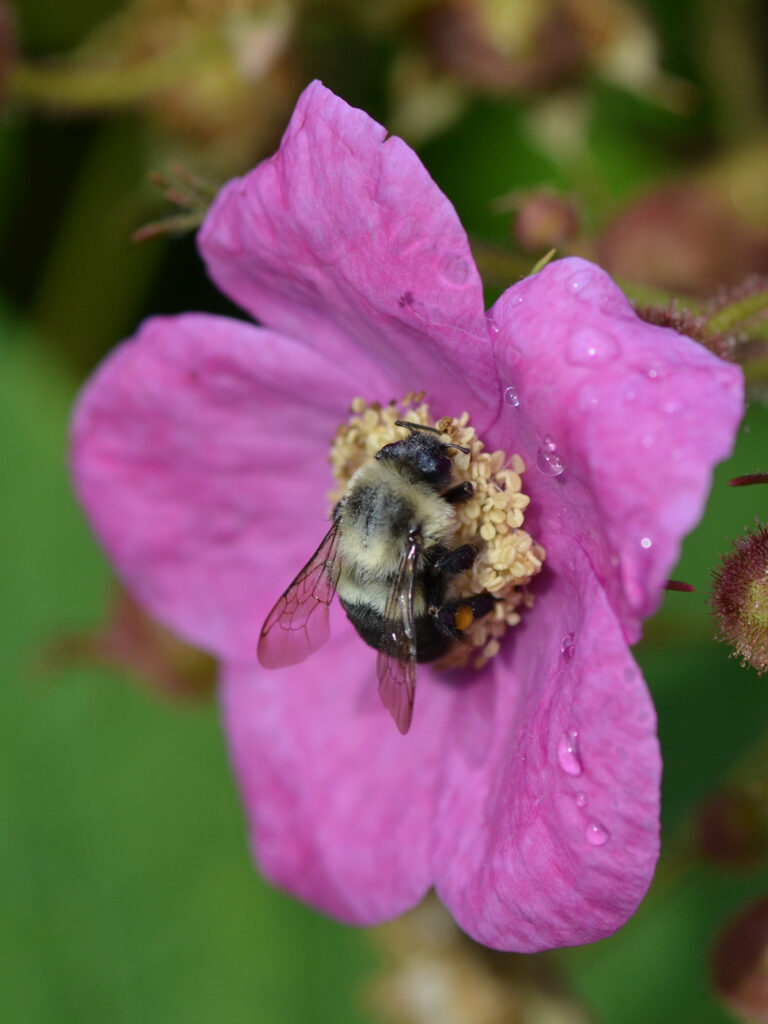
Bumble bees and other bees love the flowering raspberry shrub (Rubus odoratus).
There’s seems to be something about the flower structure that creates an especially loud buzz when bees are working there, so we’re not only able to enjoy the sight of so many bees working among the flowers, but the buzziness as well.
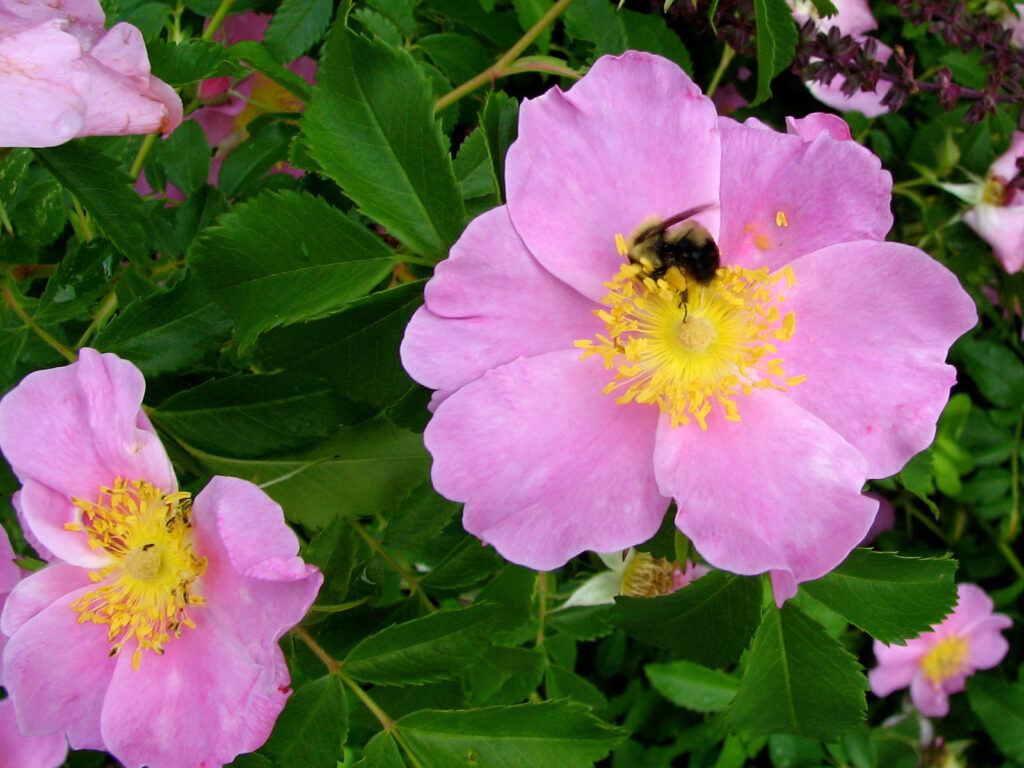
This native Virginia rose (Rosa virginiana) may not be as spectacular as a big hybrid tea, but it has a simple elegance all its own. Can you imagine how difficult it would be for a bee to actually get nectar and pollen from one of those fully doubled hybrids — if there happened to be any food available at all?
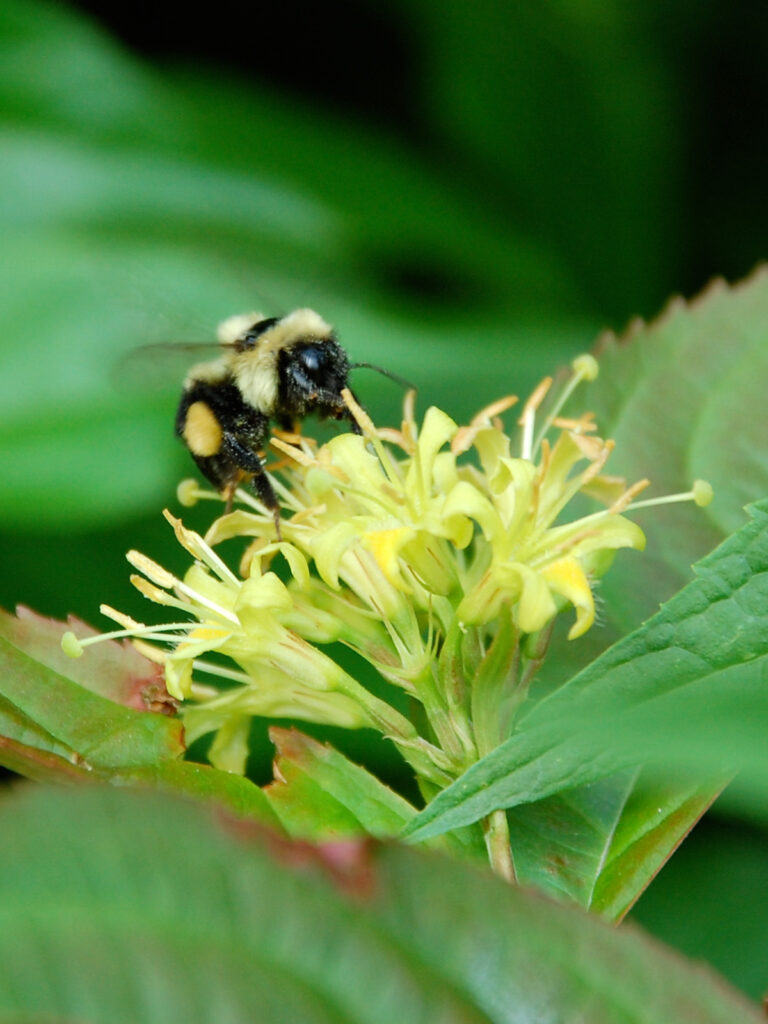
Though unpretentious, the bush honeysuckle (Diervilla lonicera) has really grown on me. (The introductory photo is a bush honeysuckle.) I enjoy its foliage and shape, and it’s very easy to grow.
This bumble bee likes it, too. You can see it has already collected quite a bit of pollen in its “saddlebags” (officially known as “corbicula”).
And here are some of our herbaceous plants bees love.
Reflections
The general principle of attracting a solitary bee is akin to attracting an adult butterfly visitor — a quantity of flowering plants of all kinds. But unlike most butterflies, the bee visits the flowers, in part, to gather pollen. The adult bee does not need a food plant on which to lay its egg, as a butterfly does, instead it needs pollen, which it places into cells and on which it lays an egg.
~ Eric Grissell, Insects and Gardens: In Pursuit of a Garden Ecology, p. 274
